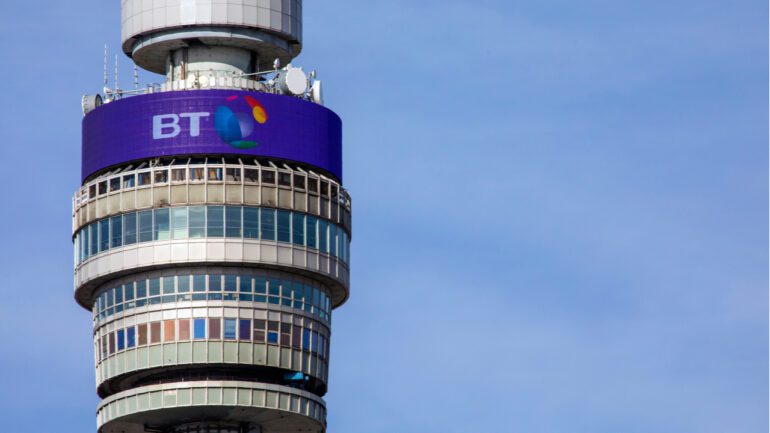TL;DR:
- BT plans to replace 10,000 staff members with AI as part of a restructuring initiative.
- Concerns arise regarding customer service and the potential impact on employment due to AI adoption.
- BT aims to strike a balance between AI and human interaction, addressing concerns about customer experience.
- BT’s AI implementation primarily affects roles in customer support and sales.
- The company also aims to leverage AI for energy efficiency and the expansion of its internet cable network.
- Executives, including Sundar Pichai from Google, express concerns about the potential harm of AI if misdeployed.
- Regulatory actions vary across countries, with Italy banning ChatGPT and the UK adopting a more relaxed approach.
- BT’s workforce reduction plan aims to cut up to 40% (around 55,000 jobs) by the end of the decade.
- Similar workforce reductions have been announced by other companies in the telecoms sector, such as Vodafone.
Main AI News:
BT, a prominent telecommunications giant, recently announced its plan to replace 10,000 staff members with artificial intelligence (AI) in the next seven years. This decision is part of a broader restructuring initiative that aims to optimize operations and reduce costs through increased automation. However, it has sparked a heated debate about the impact of technology on employment and customer experience.
The majority of the roles set to be automated are expected to be in BT’s customer service department. This raises concerns that customers may face greater challenges when seeking assistance or lodging complaints as human interaction becomes less accessible. The news adds to the growing global apprehension that AI advancements could lead to substantial job losses, potentially affecting as many as 300 million positions across various industries.
As one of the first major global companies to disclose the number of jobs affected by the AI revolution, FTSE 100-listed BT sets a precedent for the industry. Chief executive Philip Jansen believes that the company will be a significant beneficiary of AI technology and that it will help create new jobs to replace those that are lost. While acknowledging the risks associated with AI, Jansen asserts that its impact will be as transformative as the internet and mobile phones, paving the way for new services, applications, and products.
Jansen emphasizes that BT’s adoption of AI does not imply a complete replacement of human interaction. He reassures that the company will maintain a balance, ensuring that customers do not feel like they are dealing with robots. However, critics argue that the proliferation of AI chatbots in customer service could further complicate matters for frustrated consumers and those who struggle with technology. Organizations, especially those serving older customers, need to strike the right balance between digitalization and offering opportunities for human engagement.
While BT’s move towards automation aims to enhance efficiency and productivity, concerns arise about the potential loss of the human touch and personalized support. Alex Tofts from Broadband Genie points out that many individuals still value the ability to speak with a human employee for quick issue resolution. The Communication Workers Union, representing 40,000 BT employees, also stresses the importance of the human aspect in customer interactions and cautions against depriving customers of the opportunity to engage with real people.
BT’s AI implementation is expected to affect various roles, primarily in customer support and sales. The company plans to leverage its chatbot called Aimee for customer support interactions and utilize AI to make recommendations to consumers regarding product choices.
BT’s embrace of artificial intelligence (AI) extends beyond job cuts, as the company aims to leverage AI for energy efficiency and the expansion of its fiber internet cable network. The integration of AI technologies holds the potential to turbocharge productivity and drive innovation in the UK, as acknowledged by Steve Hare, CEO of Sage.
While some express concerns about the impact of AI on the labor market, even tech company executives share apprehensions. Sundar Pichai, CEO of Google, acknowledges the potential harm of misdeployed AI and the associated worries that keep him up at night. However, this hasn’t deterred Google and Microsoft from developing and integrating their own AI systems to compete in the industry.
Regulatory actions are being taken by some countries. Italy has banned ChatGPT due to concerns about user data collection, while the UK government has adopted a more hands-off approach to regulation, with Science Secretary Michelle Donelan noting the challenges of rapidly evolving legislation in this sector.
BT’s adoption of AI is part of a wider plan to reduce its workforce by up to 40% (around 55,000 jobs) by the end of the decade. This move follows similar workforce reductions announced by Vodafone, indicating ongoing challenges within the telecoms sector.
Conlcusion:
BT’s embrace of artificial intelligence (AI) and its plans to automate operations and reduce its workforce by a significant margin has far-reaching implications for the market. This strategic move by a prominent telecommunications giant underscores the increasing role of AI in optimizing operations, enhancing efficiency, and driving innovation across industries. While concerns about job losses and the potential impact on customer experience arise, BT’s adoption of AI sets a precedent for the industry and highlights the need for a delicate balance between automation and human interaction.
This shift towards AI-driven transformation will likely influence other companies within the market to evaluate their own strategies and explore the potential benefits and challenges of AI integration. As the market adapts to these advancements, careful consideration of the human element and the development of regulatory frameworks will be vital to ensure a successful and inclusive transition into an AI-powered future.

